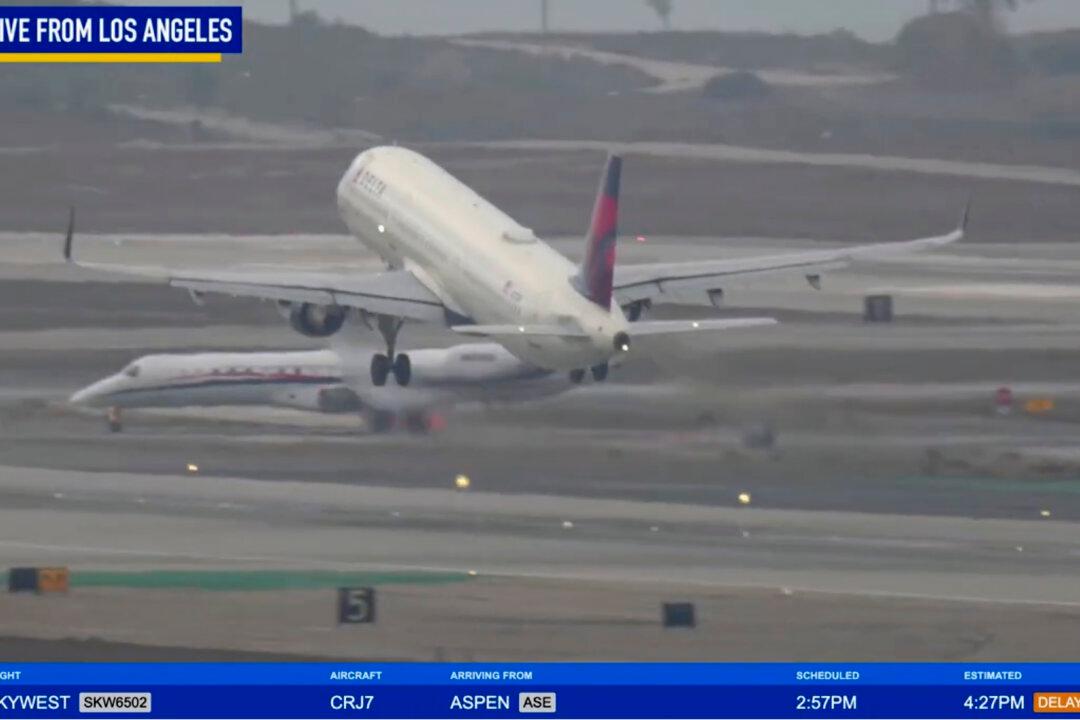An aircraft carrying a university basketball team narrowly avoided a collision with another plane on Friday at the Los Angeles International Airport.
The second plane, an Embraer E135 jet operated by Key Lime Air, was carrying the Gonzaga University’s men’s basketball team. No one was injured in the incident.
Gonzaga was in Los Angeles for its game against UCLA on Saturday. The FAA has launched an investigation into the matter.
“We understand that the incident at LAX is under investigation and we will review this information as it becomes available,” the university said. “Our team members aboard the aircraft were unaware of the situation as it occurred and we are grateful that the incident ended safely for all.”
Delta Airlines said its flight “operated as normal“ and that it was ”not aware of any communication from the FAA regarding this flight.”
“We are cooperating with aviation officials on their investigation,” the airline said.
On Dec. 28, a single-engine Piper PA-28 carrying three individuals crashed northeast of the New Braunfels National Airport in Texas.
Two days earlier, a twin-engine Beechcraft 76 smashed into a parking lot in Florida. The pilot had previously reported engine issues.
Earlier on Dec. 17, a Kamaka Air flight crashed into a vacant building after taking off from the Honolulu International Airport. Two individuals were aboard the plane.
The FAA is investigating these incidents.
Runway Incursions, Staffing Issues
In November 2023, the Senate held a hearing on the issue of aviation safety. During the proceedings, Timothy Arel, the COO of FAA’s Air Traffic Organization, revealed that out of the 54.4 million takeoffs and landings in fiscal year 2023, there were a total of 1,756 runway incursions.“Approximately 60 percent of those incursions were attributable to pilot deviations, approximately 20 percent were caused by air traffic controller action or inaction, and the remaining approximately 20 percent were caused by vehicle or pedestrian deviations,” he said.
The most serious incidents—Category A and B in which a collision was only narrowly avoided—numbered 23.
“There are approximately 1,000 fewer Certified Professional Controllers (CPC) than there were a decade ago,” he said. Chronically understaffed facilities create “unnecessary safety risks into the system,” he added.
He also highlighted funding issues facing the FAA’s Facilities and Equipment (F&E) division, which deals with infrastructure repairs, modernization, and other capital projects.
For fiscal year 2024, the FAA required $4.5 billion for its F&E activities, which is estimated to get close to $6 billion in the future.
“Despite this increasing need, for the past decade, FAA has consistently requested only approximately $3 billion per year in annual appropriations,” he said.
The agreement was brokered by four lawmakers.
“The American people deserve nothing less than the safest and most efficient aerospace system in the world, and to that end, our bill provides critical safety enhancements,” they said in a joint statement.
Sen. Maria Cantwell (D-Wash.), one of the lawmakers, said that “by getting a five-year reauthorization agreement for both FAA and NTSB, Congress is showing that aviation safety and stronger consumer standards are a big priority.”







